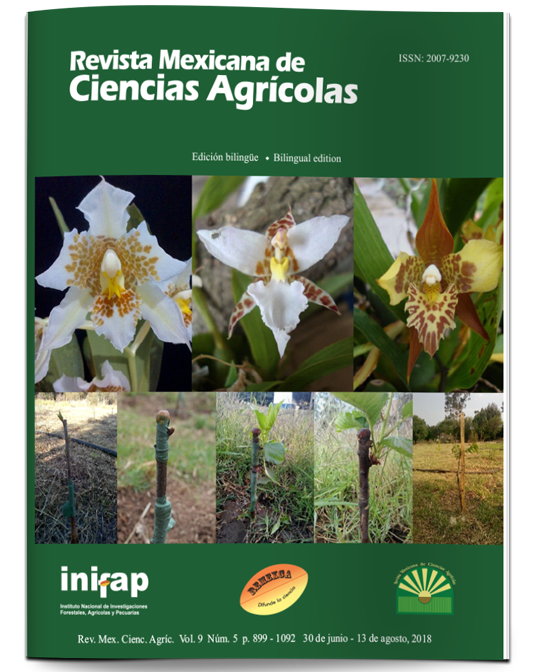Extracts of Tagetes patula L. (Asteraceae): a bactericidal potential against Moko
DOI:
https://doi.org/10.29312/remexca.v9i5.1504Keywords:
Ralstonia solanacearum, Tagetes patula L., antioxidant, essential oil, plant extractsAbstract
Ralstonia solanacearum race 2 is the cause of Moko or bacterial wilt, producing large economic losses in crops such as banana, tobacco and tomato. Several components of the extracts and essential oil (AE) of Tagetes patula L. have been described, including: benzofurans, carotenoids, flavonoids and thiophenes that are biologically active and potentially allelopathic against many pathogenic organisms. The investigations of the effect of the extracts and the AE of T. patula L., against R. solanacearum are scarce. The objective of this investigation was to analyze the antioxidant potential and determine the effect of the floral methanolic extracts (EMF) and leaves (EMH) and the AE on the growth of the bacteria. The T. patula EMF has a higher free radical scavenging capacity (DPPH) than the AE, possibly related to its higher phenol content. The EMF also has a high content of flavonoids and terpenoids. The chemical composition of the AE was determined by gas/mass chromatography, which revealed six major components, which represent more than 84% of the EA: Indane 5.47%, D-limonene 5.76%, Z-ocimene 5.98%, terpinolene 6.73%, Bervenona 19.98% and piperitone with 40.4%. The EMF as the AE inhibited the growth of R. solanacearum race 2, but the AE was more effective (radius of inhibition 16 cm). Based on these results EMF and AE of flowers and leaves of T. patula may be an option for control R. solanacearum race 2.
Downloads
Published
How to Cite
Issue
Section
License
The authors who publish in Revista Mexicana de Ciencias Agrícolas accept the following conditions:
In accordance with copyright laws, Revista Mexicana de Ciencias Agrícolas recognizes and respects the authors’ moral right and ownership of property rights which will be transferred to the journal for dissemination in open access. Invariably, all the authors have to sign a letter of transfer of property rights and of originality of the article to Instituto Nacional de Investigaciones Forestales, Agrícolas y Pecuarias (INIFAP) [National Institute of Forestry, Agricultural and Livestock Research]. The author(s) must pay a fee for the reception of articles before proceeding to editorial review.
All the texts published by Revista Mexicana de Ciencias Agrícolas —with no exception— are distributed under a Creative Commons License Attribution-NonCommercial 4.0 International (CC BY-NC 4.0), which allows third parties to use the publication as long as the work’s authorship and its first publication in this journal are mentioned.
The author(s) can enter into independent and additional contractual agreements for the nonexclusive distribution of the version of the article published in Revista Mexicana de Ciencias Agrícolas (for example include it into an institutional repository or publish it in a book) as long as it is clearly and explicitly indicated that the work was published for the first time in Revista Mexicana de Ciencias Agrícolas.
For all the above, the authors shall send the Letter-transfer of Property Rights for the first publication duly filled in and signed by the author(s). This form must be sent as a PDF file to: revista_atm@yahoo.com.mx; cienciasagricola@inifap.gob.mx; remexca2017@gmail.
This work is licensed under a Creative Commons Attribution-Noncommercial 4.0 International license.



